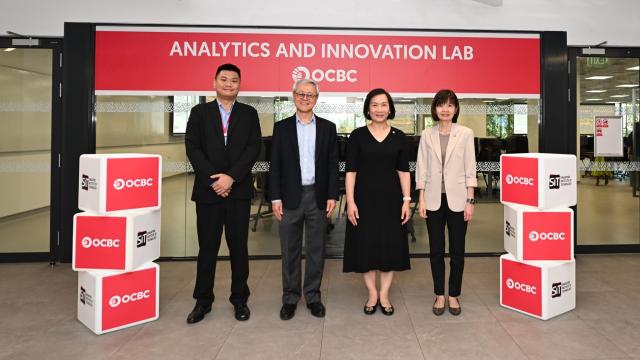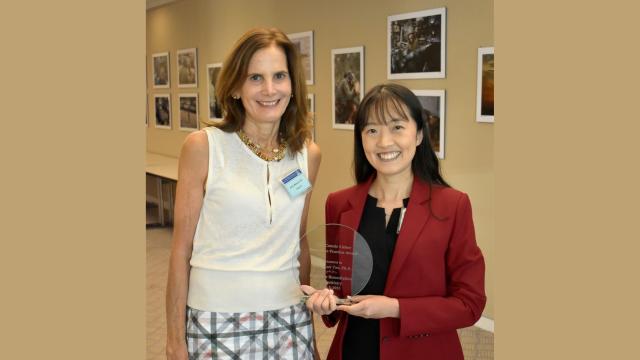Speakers from the Applied Learning Conference 2022 share how virtual reality and games are transforming the way students learn.

Picture this: there is a global infection raging across the world, and the scientist working to cure it has been infected. You are humanity’s last hope, but to develop a cure, you will need to cultivate the appropriate antibodies. Fail, and humanity will perish.
Students majoring in pharmaceutical engineering are faced with the above scenario to learn how to use complex equipment necessary for their field of study – through a virtual simulation, of course. Technology is transforming the way students are learning in institutes of higher learning across the world.
At the Applied Learning Conference 2022, speakers from Singapore institutions shared how tech such as virtual reality (VR) and games can help students learn better beyond the classroom.
Engaging students with games
Pharmaceutical engineering students in the Singapore Institute of Technology (SIT) learned how to use complex biopharmaceutical equipment through a gamified VR simulation.
Within virtual reality, students help the protagonist to combat a global infection by growing cells and creating an antibody within the bioreactor, which is used to grow organisms under controlled conditions.
The gamification techniques and science fiction storyline assist in contextualising the problem and retention of the theory, explained Associate Professor Jeannie Lee, Infocomm Technology cluster.
While playing, students receive feedback on their actions and learn through both visual feedback and audio voice prompts. The learning progress is reflected at checkpoints throughout the VR simulation.

Pharmaceutical engineering students in the Singapore Institute of Technology learn how to use complex biopharmaceutical equipment, including a bioreactor, through a gamified VR simulation.
Students who participated in the research phase for the virtual reality simulation gave feedback that they found it fun and easy to understand, shared A/Prof Lee. They also reported that it helped improve their knowledge of the biochemistry concepts, she added.
While games can be educational, there is a challenge in balancing elements of fun and learning when designing games, said Dr Linda William, a Senior Lecturer from the School of Informatics & IT at Temasek Polytechnic.
Game design should always begin with the concept, skill, or knowledge that educators want students to learn, she suggested. Once that is established, educators can break down the learning outcomes, identify points of assessment, and come up with questions for each topic.
These questions can then be integrated into the game, so that students who play it can walk away with the desired learning outcomes, said Dr William.
Training students more effectively using VR
VR can enhance learning, especially in fields like engineering and healthcare. For these industries, it is crucial to get procedures right, and cost for operations might be high, said A/Prof Lee.
The VR simulation can help students learn how to use complex and expensive machinery that they have limited access to while in schools, she shared.
At SIT, researchers created a 3D virtual version of an equipment called the bioreactor, which users can interact with through a VR headset. Through this simulation, students learn how to identify the components of the bioreactor, set up the machine, and cultivate cells with it.
Besides interactive elements, virtual simulations can combine with practical lessons to enhance learning.

A student developer demonstrates the VR simulation used by pharmaceutical engineering students in SIT.
For example, educators can add informative videos into the virtual simulation to better prepare students for practical lab sessions, said Associate Professor Victor Wang, Engineering cluster, and Deputy Director at the Center for Learning Environment & Assessment Development, SIT.
Additionally, virtual simulations give students equal access to a piece of equipment. For example, students may find it difficult to read finer details and information off a single device in a physical lab environment. But online, everyone can see the data clearly, A/Prof Wang explained.
This overcomes the space constraints in labs, he added.
While virtual simulations can help students in their learning, it is not yet a replacement for physical lab sessions, said A/Prof Wang. Like learning to drive a car, it is difficult to learn practical skills merely through virtual sessions, he shared.
Conducting physical experiments firsthand also helps students understand the dangers with certain equipment and why it is important for them to follow safety procedures. “It’s not just about achieving the specific project objectives, but also about conducting the experiment safely,” he explained.
Personalising learning through data and machine learning
Without real-time feedback, it can be difficult for educators to track students’ progress in a virtual environment, whether it is in educational games or virtual simulations. Data and machine learning can solve this problem.
While students are playing the game, relevant data is collected and analysed, said Dr William. Machine learning can then be used to find insights from their feedback, and if they are struggling with certain topics.
For example, if machine learning detects negative sentiments from the students, educators can follow up with the student, she explained. Machine learning can also alert the teacher if many students are struggling with a particular topic. In such cases, educators can take steps to explain it better or focus more on that topic in lessons.
Another way machine learning can help is by clustering students based on their performance. For instance, students who get many questions wrong in the game will be classified as weaker students. Educators can then follow up based on this information and provide more help to students who need it.
Gone are the days of poring over textbooks and listening to teachers drone on during lectures. By integrating game and VR elements into education, students are more motivated to learn and can pick up concepts and skills in a fun and engaging way.
– – –
This article first appeared in GovInsider.
![[FA] SIT One SITizen Alumni Initiative_Web banner_1244px x 688px.jpg](/sites/default/files/2024-12/%5BFA%5D%20%20SIT%20One%20SITizen%20Alumni%20Initiative_Web%20banner_1244px%20x%20688px.jpg)


